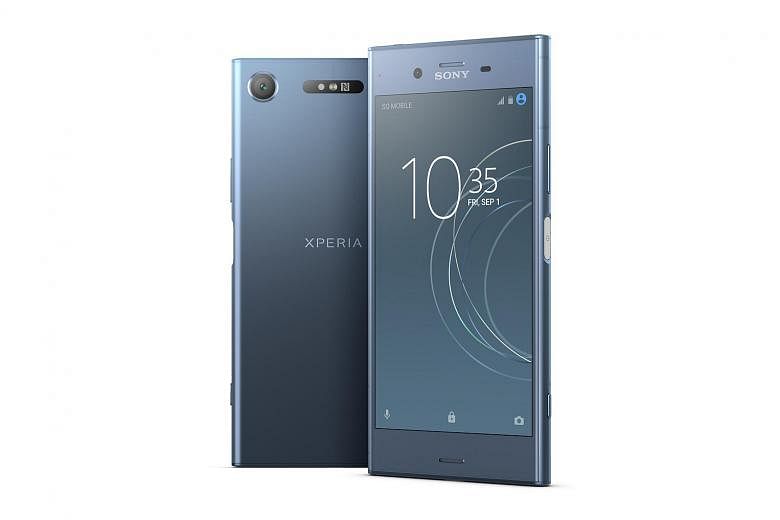The best thing about the Sony Xperia XZ1 is that it is instantly recognisable. But it is distinctive because Sony has made only minor tweaks to this design over the past few years.
Hence, the XZ1 looks very much like the Sony XZ Premium, a flagship phone launched in June. The XZ1 has a smaller 5.2-inch screen and a matte finish that is less susceptible to fingerprints than the 5.5-inch XZ Premium's glossy finish. The bezel at the top and the bottom of the XZ1 is chunky while the fingerprint sensor, which is also the power button, is at the edge of the phone. With its curved sides, the XZ1 fits nicely in the hand.
The hardware is also very similar. Both phones sport the latest Qualcomm processor with 4GB of RAM. Both also share a similar 19-megapixel camera, though the newer model has a new 3D scanning feature.
Dubbed 3D Creator, this feature lets you scan a 3D object with the rear camera. It works with faces, heads or food. The resulting 3D scan can be used in augmented reality apps or even become reality via 3D printing.
I preferred the camera's more conventional features, like the predictive capture mode that automatically saves shots before you press the shutter so that you do not miss the right moment. Photos look good in bright sunlit conditions, but lose detail in low light. There is a slight amount of shutter lag.
The Xperia XZ1 is one of the few phones to support High Dynamic Range (HDR) videos on streaming service Netflix. While HDR videos do look more vibrant, the overall experience is muted by the XZ1's modest full-HD screen. In fact, the phone's front-facing dual speakers probably did more to enhance my viewing experience.
I was not impressed with the screen's adaptive brightness function. The screen brightness does not change smoothly, but in distinct, jerky steps, like shifting gears in a manual car. Another annoying issue: the phone would occasionally lose mobile connectivity. This was usually resolved within seconds without my intervention, though once in a while, it required a reboot to rectify.
-
TECH SPECS
PRICE: $898
PROCESSOR: Qualcomm Snapdragon 835 (Quad-core 2.45GHz and Quad-core 1.9GHz)
DISPLAY: 5.2-inch, IPS LCD, 1,920 x 1,080 pixels, 424 ppi pixel density
OPERATING SYSTEM: Android 8.0
MEMORY: 64GB (microSD expandable up to 256GB), 4GB RAM
CAMERA: 19MP, f/2.0 (rear); 13MP, f/2.0 (front)
BATTERY: Non-removable 2,700mAh
RATING
FEATURES: 4/5
DESIGN: 3/5
PERFORMANCE: 4/5
VALUE FOR MONEY: 4/5
BATTERY LIFE: 3/5
OVERALL: 4/5
The Xperia XZ1 is one of the few smartphones to run the latest Android 8.0 Oreo. Sony has kept a light touch, with just a couple of pre-loaded Sony-centric apps like PlayStation and Xperia Lounge. But having to press the default launcher key to view all apps feels outdated compared to swiping up in vanilla Oreo. But generally the user experience is clean and smooth.
More importantly, Sony deserves credit for rolling out security patches for Android before even Google. My Xperia XZ1 has already installed the October security patch while Google's own Pixel 2 XL has yet to receive the update.
The XZ1 will last a full day of use, but not much longer. It has a couple of stamina modes that will disable functions such as background data to extend battery life.
•Verdict: Competent but lacking in panache, the XZ1 will likely attract few new fans.


